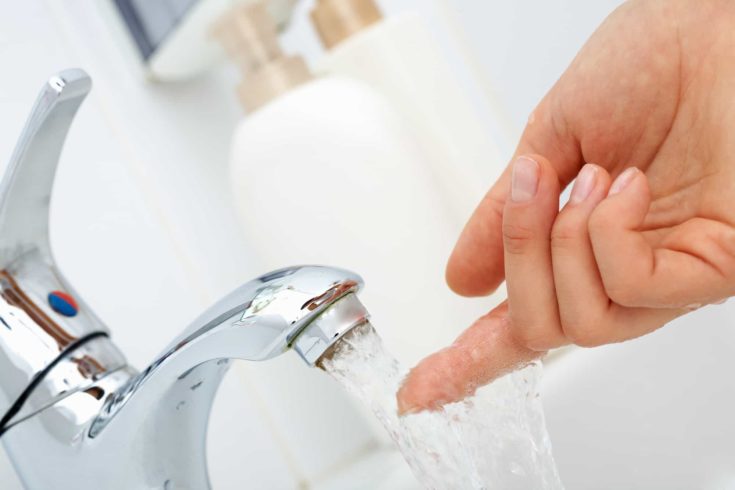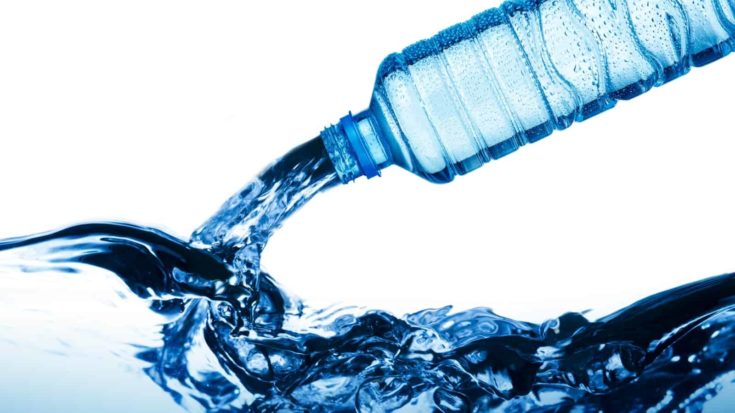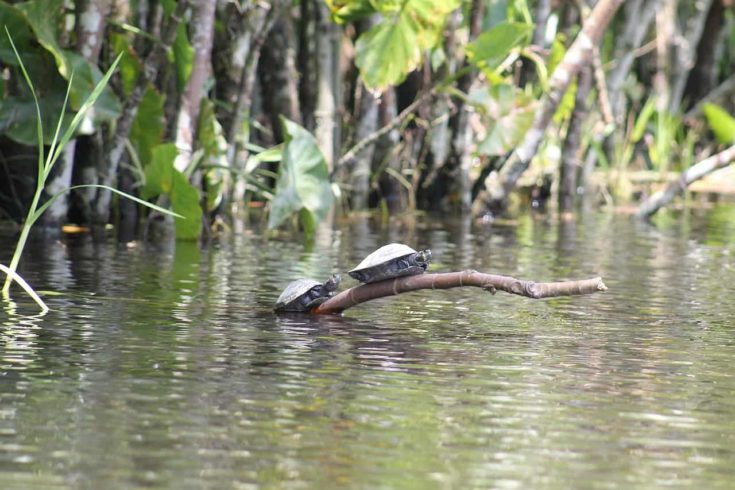We’ve all been there – you’re getting a new fish tank, you have the aquascape figured out, and you even know what fish you intend to fill your tank with. But wait! You’ve forgotten the most important part – what type of water should you use?
A responsible fish owner will do their best to provide the best environment for their fish. Given all the benefits that owning an aquarium provides, it only makes sense for you to take excellent care of it! If you’re hoping to learn more about the best water for fish tanks, this article is for you!
Aquarium Water Sources
The type of water you select for your fish can have quite a significant impact on their health and well-being. Selecting the right type of water would allow them to thrive in your tank, while making poor decisions in this regard may cause you to have disease-prone fish.
Here are some of the most commonly used types of water in fish tanks, as well as some tips on making sure that they are safe for your fish!
Municipal Tap Water

Turning on the tap seems to be the simplest way to provide your fish with a cushy, watery home. Make sure that the water is bacteria-free and properly disinfected if it comes from a municipal water source. However, note that municipal water quality can differ by location.
Water obtained from certain sources might contain dissolved minerals such as magnesium and iron, while other sources may contain no minerals. Tap water from some municipal sources may contain a large amount of asbestos or ammonia which can endanger the well-being of your fish.
The use of chlorine is another main issue that makes tap water a less-than-ideal choice for fish tanks. Chlorine is commonly used to treat water from municipal sources as it can effectively rid water of all pathogens, but can cause chlorine toxicity in fish.
In addition to chlorine toxicity, using chlorinated water can also disrupt the biological filtration system in your tank. Denitrifying bacteria play a crucial role in keeping water parameters manageable and healthy, but chlorine will kill this bacteria. Therefore, if you are opting to use municipal tap water in your tank you will need to use an effective water conditioner and dechlorinator.
Well Water
Well water isn’t treated with chlorine, which makes it a popular choice among aquarists looking for a good water source. However, the primary caveat to take note of when it comes to well water is that it is unregulated.
This means that well water might contain contaminants you might not find in municipal water. Depending on where you live, the number of contaminants present may differ in concentration, ranging from relatively harmless to life-threatening levels.
Some examples of harmful contaminants include nitrates or coliform bacteria, which occur due to agricultural runoffs. Other examples include volatile natural compounds derived from paints, pesticides, herbicides, and industrial runoffs.
Last but not least, well water can also vary in pH and oxygen levels. Aeration is typically necessary to ensure that oxygen levels are up to mark. In addition, you will need to tweak your pH to levels that are appropriate for your fish.
Bottled Water
Many people mistakenly assume that bottled water makes an excellent option for fish tanks because of the mineral it contains. After all, if it’s good enough to drink, it must be good enough for our fish, right? Let’s take a deep dive into this assumption.
If your bottled water comes from a natural source (think spring water) it may contain additional minerals which are unhealthy for fish. It also goes through multiple filters, which eliminates many of its essential components. Definitely run the water through a test kit before you use it, just to be safe!
On the other end of the spectrum, you have distilled water, which is completely devoid of essential minerals. Using distilled water in its original form would prove extremely harmful to your fish, and you would need to add minerals back into the water.
Generally speaking, bottled water also tends to be a more expensive option. Not only does the water alone cost more than obtaining it from a well or municipal source, but there are also additional costs involved as you’ll need to get test kits and remineralizes to ensure that the water is optimal for your fish.
Rainwater
For those of us who may not want to spend money on bottled water or use municipal water for our fish, there’s a third alternative to consider – rainwater. While rainwater can be a decent source of water for your fish, we recommend extensive testing for the reasons we shall explore below.
First of all, rainwater can have unpredictable pH levels. In addition, the contaminants in the atmosphere can pollute rainwater. These contaminants originate from air pollutants such as smoke or chemicals. It can also pick up asbestos from shingles if it lands on the roof before collection.
In addition, storage and the unpredictable availability of rainwater can pose an issue. Collecting large quantities of rainwater can leave you with the inevitable task of finding an appropriate home for your tanks. However, opting not to store copious amounts of rainwater can leave you out of options during the dry season.
Our takeaway is as follows – rainwater can be a viable source of water for your fish tank, but it shouldn’t be the only source due to practical reasons. Mother Nature can be unpredictable, so always have a contingency plan!
Distilled Water

Distilled water seems like a good source of water for your fish as it is contaminant-free, widely available at many stores, and affordable. This kind of water is produced via the process of condensation. It leaves contaminants and impurities behind as the steam rises.
This condensation is collected and stored in the bottles. However, more than 99% of minerals are killed from the water after this process. These minerals include sodium, calcium, and magnesium. You will have to remineralize it before adding distilled water before adding it to your tank.
The upside to using distilled water is that it is usually dechlorinated. Distillation completely removes chlorine from the water – tests should indicate a chlorine level reading of 0 ppm.
In short, distilled water may be the purest type of water, but it may not be the most ideal. Remineralization needs to take place before it becomes a suitable habitat for fish.
Reverse Osmosis (RO) Water
Reverse Osmosis water, otherwise known as RO water undergoes a filtration process where water moves from a region within the filter containing high particle concentration areas to a region with low particle concentration areas.
It transfers water through a fine membrane (through which particles are trapped with a single side) and allows the flow of purified water to the other side as RO switches that procedure around. The RO water for the aquarium is considered a good choice due to several reasons.
It would help if you remineralized it before adding it up to the tank, as RO filters can be quite effective. Contaminants such as larger bacteria, chlorine, minerals are filtered out of the water, but many smaller pathogens might still persist.
Deionized (DI) Water
As the name would imply, deionized water is simply a type of water in which all ions have been removed. It is a purification process involving a resin-based filtration system that traps electrically charged contaminants and minerals (ions).
These charged ions are then exchanged for neutral hydrogen ions (that are harmless charged particles). If you want to be absolutely sure that your tank is free of chemical contaminants and minerals, DI water is the move.
DI water still needs to be adjusted before it is added to the tank if. You must remineralize the water to make it optimal for the fish. It would be best to do it as the deionization procedure tends to kill harmful and essential minerals.
A Quick Note on RO vs. DI Water
Because RO and DI water both involve purification processes, it can be confusing to tell between the two. The important thing to bear in mind is that RO is a physical purification process, while DI is a chemical process.
The fact that DI is a chemical process means that it cannot remove viruses and bacteria from the water. However, depending on the degree of purification the system is capable of, it might be able to remove chemical contaminants that the RO system can’t.
Lake or River Water

People sometimes assume that water from lakes and rivers would make great water sources for their fish, because these are their natural habitats. Unfortunately, this is usually not the case.
Water from lakes and rivers contain lots of harmful bacteria, disease-causing parasites, as well as contaminants produced through industrial pollution. Wild fish are usually capable of surviving in these habitats because they have adapted to these conditions over an extended period of time.
Unfortunately, fish bred in captivity generally have weaker immune systems due to multiple generations of selective breeding. This makes them all the more susceptible to illnesses carried by harmful bacteria, viruses, and parasites found in lake or river water.
In the event that you absolutely need to rely on a lake or river as a water source, it would be crucial to test the water thoroughly, disinfect it, and add a conditioner. This would lower, but not eliminate the risks associated with using lake or river water in your tank.
How to condition water for a fish aquarium?
Conditioning water for an aquarium is essential as you want a chemically balanced, clean, and safe habitat for your fish – no matter which type of water you opt for. Here are a few parameters you should keep in mind:
KH
KH measures the bicarbonates and carbonates in the water. It is essential to keep your KH levels consistent, as fluctuating kH levels cause pH levels to swing. This stresses your fish out, weakening their immune systems and making them more susceptible to illnesses.
GH
The concentration of magnesium and calcium ions in water is measured through GH. Different freshwater fish species have different GH levels requirements. This water parameter is only used in freshwater tanks.
pH
The acidity of water is measured through pH. In other words, this is a measurement of the hydronium concentration of water. This would help you determine if the water in your tank is alkaline or acidic.
Controlling pH, KH, and GH Levels
There are multiple ways of controlling your water parameters, but it is best to opt for a method that is relatively safe and foolproof. Here are two quick and simple ways of raising or lowering your pH, KH, and GH levels!
Raising: A gentle means of raising pH, KH, and GH levels is by adding crushed coral.
Lowering: Let your tank acidify over time, and add water filtered through an RO or DI water system when conducting water changes.
Adding Minerals to the Water
If you plan on filling your tank with water that’s been distilled, deionized, or subjected to reverse osmosis, keep in mind that you’ll need to re-mineralize it by adding a little bit of tap water. After purchasing a remineralizing solution, add a few drops to your tank.
You can think about this as a way to keep your aquarium water safe for your fish. Just as drinking water needs to meet an appropriate standard for human consumption, so too does aquarium water for fish. In other words, the right kind of water is a matter of life or death for your fish.
Conclusion
Ultimately, your primary consideration when deciding on what kind of water to use should be whether or not it provides a safe, clean habitat for your fish. Other factors to consider include its availability, budget, and convenience.
Did you find this article helpful? If you did, don’t forget to share it with someone else who might appreciate it! And if you’ve had experience figuring out the best type of water for your fish, we’d love to hear from you. Talk to us via the comments section below!

Thanks. Great article. Well done!